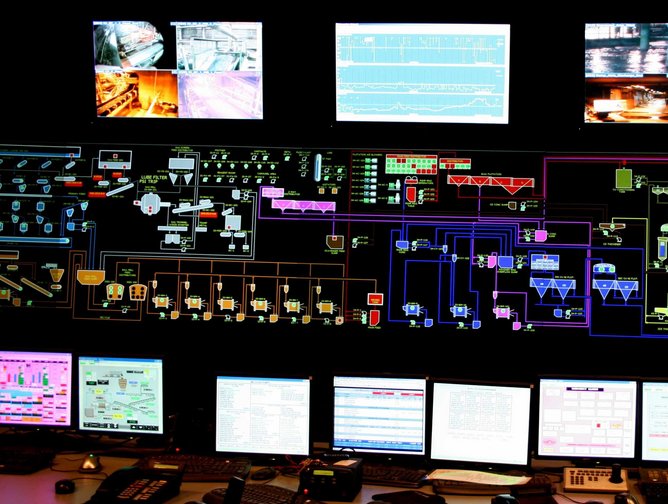The mining industry has seen multi-factor productivity decline over the last 30 years and though injury rates have reduced, improvements have been too often piecemeal and localised. With more than 40 years’ experience at a senior level in some of the biggest mining groups and most prestigious research institutes between them, Dr Sharna Glover and Prof Alan Bye were not happy with the current state of the mining industry. “One reason Alan and I decided to start up Imvelo is that we feel both safety and productivity have flatlined,” Glover explains. “I think the last safety frontier is removing people from all hazardous situations. We still have people working on mine equipment or around molten metal in the processing plants but robotics and automation can definitely remove people from these high risk areas.”
Where productivity is concerned, she adds, in tough times necessity drives improvements but when demand is high these improvements are often abandoned till the next squeeze comes along. “We want to bring together technology and innovation in a more accelerated way to lock in each gain for the benefit of the industry as a whole.” This will drive a step change across the industry.
“To assist clients reach the next frontier, system-wide solutions are required,” says Alan Bye, who is Professor and Director of Digital Value Chains at Curtin University, Western Australia’s largest university. “Automation does require a system-based approach. The industry does not have much experience in this so Imvelo is bringing that knowledge in a partnership approach that can deliver the system change we are talking about.”
There are mountains of data to be gleaned from all the assets along the mining supply chain from the mineface to the port. Shovels, conveyors and trucks bristle with sensors that monitor detailed information about the equipment but less so the valuable ore material. Along the way there are multiple opportunities for both equipment and process automation, Bye points out. “Intelligent decision making up and down the supply chain using AI can and should be driven by reliable sensor data and interoperable equipment. But contrary to what you might imagine the mining industry’s investment in R&D at around 0.2% of revenues has been small in comparison to comparable global cross industry enterprises where 1-10% is not uncommon.”
Further, Imvelo’s founders feel that productivity data is not sufficiently discussed across the industry. Reductions in unit cost, increases in volumes are the outcomes being sought while their relationship to capital investment and enterprise-wide sustainability is not well analysed. Traditionally, says Bye, miners invested capital in infrastructure to achieve volume growth, but many technology efficiencies that come at a much lower level of investment can initiate and sustain longer term growth. Herein lie the big opportunities they see for integrated technology driven by data.
They are not talking about point solutions. “You can buy off the shelf technology today that allows a truck to run in an automated fashion, and that is mostly what the industry has been pursuing,” resumes Glover. “That approach delivers safety gains by separating people and machinery but is limited from the productivity point of view because of the way the solutions were built. The OEMs started that 12 years ago but have not pivoted the technology to the level of smart road autonomy, where we now have cars that can localise, have good perception, can communicate with other vehicles and fixed infrastructure.”
If that level of autonomy could be applied to how mining methodology is conceived you could have the autonomous trucks talking to each other so that they can start to execute a mining mission and manage changes as circumstances change, she predicts. “There’s no point in having trucks queueing at a broken-down shovel, but they could manage that change themselves!” For example they also could talk to the water truck. Technology exists on the trucks to tell them about dust and road conditions so they could tell the water trucks when to water bringing savings in fuel and avoiding under- and over-watering.
They are looking at the autonomy solutions being developed for road-going vehicles and forging strategic partnerships to the benefit of all involved. It is easier to perfect these technologies in a ‘closed’ environment like a mine than on the open road where more complex societal considerations have to be factored in. So companies that had never thought about mining enthusiastically responded to the opportunities Imvelo offers to develop their own solutions. OEMs too are more than willing to explore how their machinery can be optimised within larger systems like an autonomous mine – and to recognise that this system will include a host of vendors working together in an open interoperable ecosystem.
All the technologies that already exist just have to be pieced together. “It is really just about thinking how this technology-enabled process can be radically re-designed rather than just thinking about how to apply the technology to the process, originally designed as a manual process, as it exists today.” explains Sharna Glover. At every stage they want to encourage their partners to think in terms of the ‘mining mission’ rather than finding a discrete solution. “We draw together the people who understand autonomy, perception, localisation, communications, the market and the like. It is an ecosystem.”
The partners in this enterprise range from mining companies that Glover and Bye know so well to some very small start-ups spun out of Silicon Valley majors. “We are working with some very small companies. Big mining companies are not as good at partnering with these transformational innovators that are popping up. At Imvelo we pull together the best technology in the world – advanced tech that does not suffer from legacy being built on the latest architecture and that can be integrated fast. If you want to make a change in your ERP it can mean shutting it down for weeks: this needs to be more like putting an app on your phone. Our strong point at Imvelo is strategic partnering to capture this thinking, which is missing in the industry today.”
In the new ecosystem people will talk the language of innovation, Alan Bye emphasises. “There are talented people working in these start-ups; they work seamlessly with university academics. We are in a position to place start-ups and academic partners at the service of the real-world industry needs of mining companies of all sizes.”
This is not new territory for them. Each of them has years of experience implementing this thinking within mining majors like BHP – they are simply making that experience available to mining, oil & gas as well as forestry operators, wherever in the world they need to look. Take the field of sensors – companies like Canada-based MineSense have developed sensors that can gauge the quality of the mineral in every bucket, bringing down the level of decision-making from around 10,000 tons to 100 tons. Another smart start-up is Southern Innovation of Melbourne whose technology improves the performance of radiation-based analysis in mining applications. Its SITORO technology performs digital pulse processing in a more efficient way than traditional methods, improving detection speed and accuracy. They work on sensors as well as the algorithms that process the sensor information allowing much more efficient discrimination of mineral content, says Bye: “In a system approach you need the sensors and also the analytics of the sensor data. You require a consortium of sensor companies to get a holistic picture of your operation. At Imvelo we understand the industry challenge, the business case for solving that challenge; then we formulate the technical problem and bring in a set of partners to work on it.”
Open, interoperable automated technology for mobile equipment is still imperfectly understood: but looking beyond these transformational technologies to whole-mine automation will become an economic game-changer for the industry, continues Bye. “The ability to measure ore variabilities in real-time at every touch point in the supply chain steps up the ability to add value by removing dilution and manage geometallurgical variability offering significant economic benefit. The sensors exist to do this and are improving constantly, so the next challenge is how to integrate them into the business process.”
No company can now ignore the sustainability benefits technology can deliver. “This is an industry that has been dominated by the big deposits,” reflects Sharna Glover. “That’s what drives the quest for volume gains to dilute fixed cost. In turn that has favoured bigger trucks and the need for workforce reductions. The big deposits are depleting now, and I think the industry will move to smaller deposits requiring a more sustainable approach – for example smaller fleets with lower total cost of ownership that can be more environmentally friendly. Battery technology and lower cost maintenance can be introduced. I can see a tipping point coming very soon and that is another reason Alan and I started up Imvelo.”
There has been foot-dragging over automation in an industry that has been founded on job creation, they have found, but as technology grows the industry needs more partners developing smart solutions, and skilled people must be there to run and maintain them in the field. The opportunity for developing AI, robotics and automation has so far only been glimpsed. Advanced Mining service companies can step up to fill the gap left by the decline of manufacturing in countries like Australia. They also believe that in this new reality mining is shedding its grime-streaked image and attracting young, highly skilled people. It is all part of Imvelo’s vision, reflected in its name, which is a Zulu word meaning to nurture the ecosystem.




